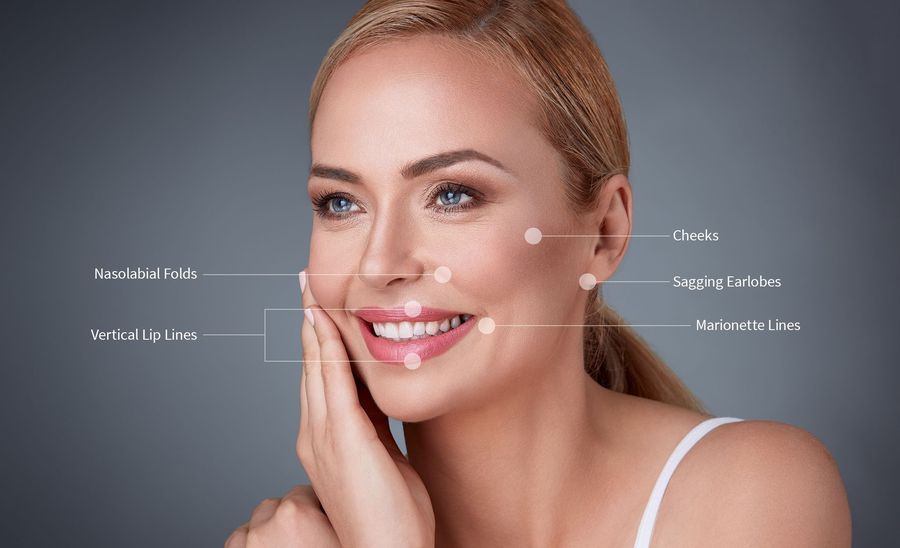JUVEDERM

Definition: The dermal filler Juvederm is an injectable non-granular gel made of hyaluronic acid, a substance that occurs naturally in your skin and that is responsible for much of your skin’s fullness. It received the U.S. Food and Drug Administration’s approval for correcting moderate to severe facial wrinkles in 2007. [1]
This dermal filler comes in three formulations and all are used to fill in facial wrinkles and folds (particular nasolabial lines that run from the corners of the nose to the corners of the mouth) and to re-contour the face and lips.
- Juvederm 18: a fluid gel targeting the superficial (upper) dermis for fine lines such as crow’s feet.
- Juvederm 24: a denser gel with a higher concentration of hyaluronic acid molecules targeting the mid-dermis for moderate lines such as forehead winkles.
- Juvederm 30: the densest gel, targeting the deep dermis for deep naso-genian grooves (the folds between your cheeks and nose) and nasolabial folds, for enhancing lip volume, and for reshaping cheek contours. [2]
How does it Work?
Juvederm improves your appearance by lifting and adding volume to the wrinkles and folds in the treatment area. As you age, your skin loses some of its hyaluronic acid, a process that is sped up if you’ve spent a lot of time in the sun. The hyaluronic acid in Juvederm helps keep your skin hydrated, thus restoring and maintaining its volume. Hyaluronic acid also appears to stimulate the production of collagen and elastin, two proteins that contribute to the skin’s fullness and elasticity.
Juvederm’s manufacturer (Allergan) uses a chemical “cross-linking” process that binds the individual chains of hyaluronic acid into a long-lasting gel with a very smooth consistency. Because of the gel’s smoothness, your face also looks and feels smooth and natural. [1]
Although it can be used on all shades of skin, Juvederm was the first hyaluronic acid dermal filler proven to be safe and effective for persons of color. Studies have shown that it doesn’t increase the risk of hyperpigmentation or hypertrophic scarring in darker-toned skin.
Treatment
Most treatment sessions take only about 15 minutes. You can have the procedure done over your lunch hour and go right back to work or to your other afternoon activities. The transparent Juvederm gel is injected with a syringe into the mid- to deep dermis of your face. The dermis is the subsurface skin layer that contains connective tissue, nerve endings, sweat and oil glands, and blood vessels. Although any discomfort from the injections is minimal, you may choose to have the treatment area anesthetized—or numbed—beforehand. [1]
Side Effects
Side effects are minor. They may include redness, swelling, bruising, itching and tenderness. Juvederm is hypoallergenic, so allergic reactions do not occur.
How Long Does it Last?
After six to nine months, the biocompatible compound is naturally absorbed into the body.
Cost of Juvederm
Juvederm cost typically ranges between $300 and $1,000 per syringe, depending on the formula used and other factors. In some cases a second syringe may be needed for a fully satisfactory outcome. Some practices may offer a reduced rate for the second syringe in these cases. If the out-of pocket cost is more than you can pay all at once, ask your doctor about payment plan options.[2]
Juvederm vs Restylane
Both are often used for plumping the lips and filling lines and wrinkles. Both last up to 9 months between injections and are made of hyaluronic acid. While there are some differences (such as molecule size and consistency) the decision as to which ought to be used should be made by your doctor. [1]


